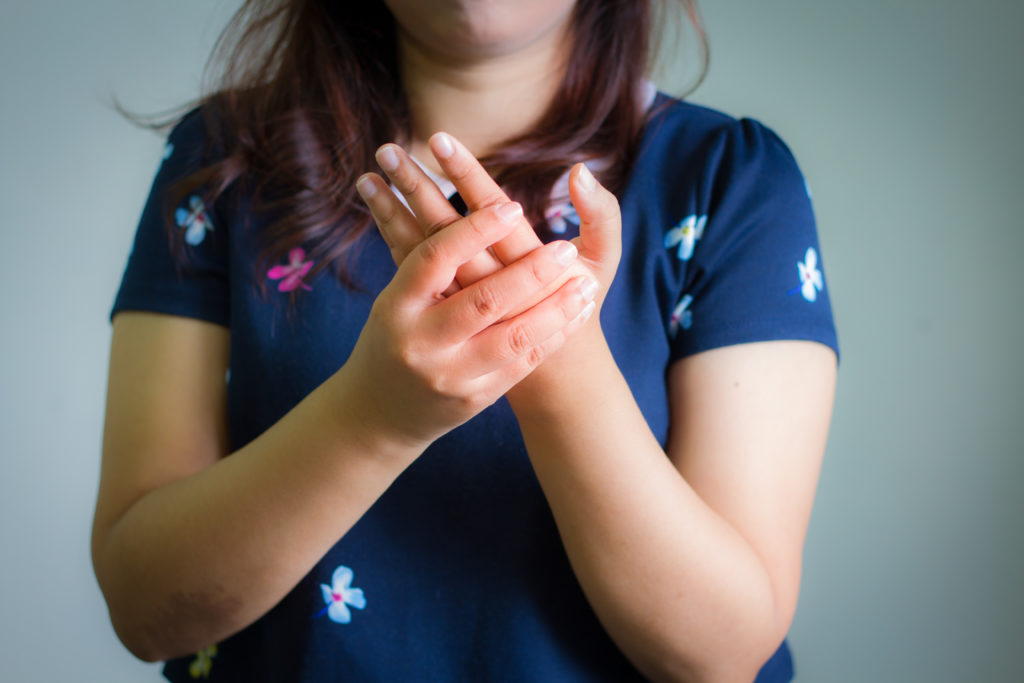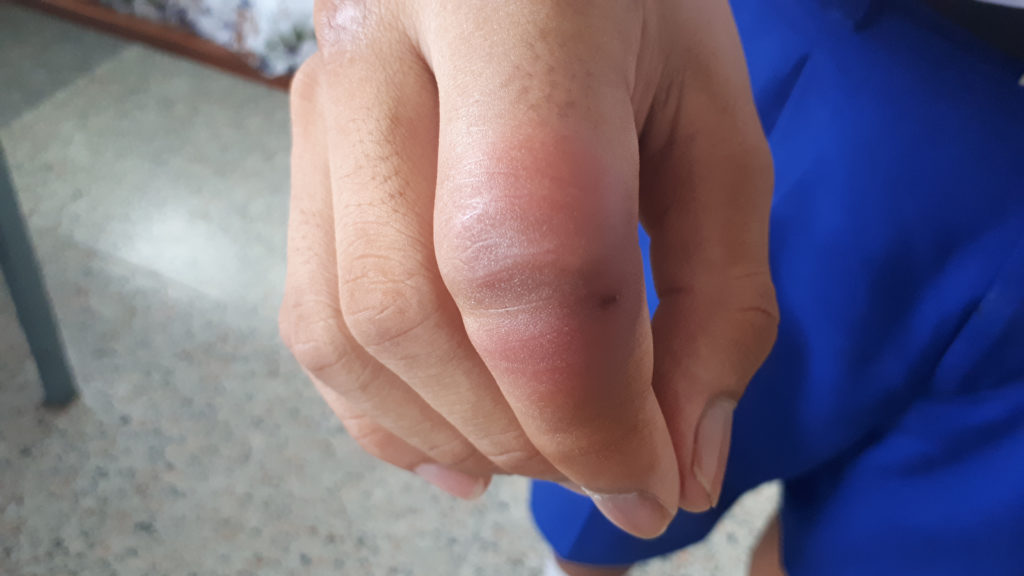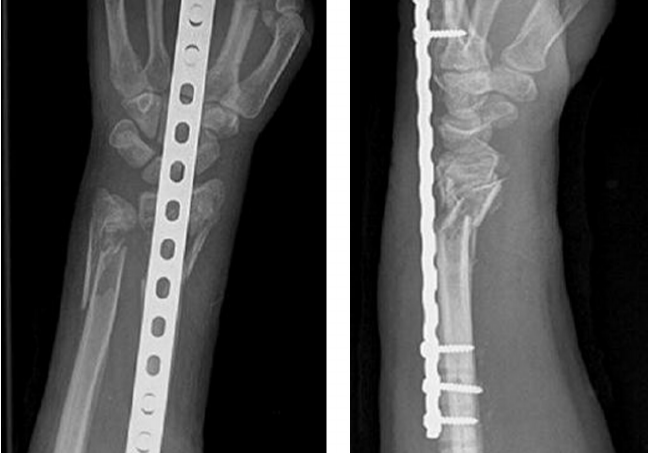Article Review: Best Edema Management Techniques in Hand Therapy
Filed under Reviews, Treatments
Miller, L. K., Jerosch-Herold, C., & Shepstone, L. (2017). Effectiveness of edema management techniques for subacute hand edema: a systematic review. Journal of Hand Therapy, 30(4), 432-446. doi: http://dx.doi.org/10.1016/j.jht.2017.05.011
By: Ammie Ingwaldson
The Skinny
Edema is something therapists deal with on a daily basis and often is apart of most treatments. Managing edema can be a challenge for hand therapists. Edema impacts joint range of motion, soft tissue mobility, quality of scar tissue formation, function, and strength. Prolonged edema may lead to increased recovery times and delayed participation in activities of daily living. Conventional edema management techniques include massage, elevation, exercise, and compression. Manual edema mobilization (MEM), or massage, is provided with a “retrograde” (distal to proximal) stroking action with only minimal pressure to traction the skin (manual edema mobilization vs retrograde massage).
Kinesiology tape can be placed as an adjunct to MEM for edema management. It is designed to lift the skin allowing greater interstitial space and encouraging lymphatic drainage. Elevation is simply the use of gravity to assist with the drainage of edema. Active exercises manage edema through tendon gliding and muscular contractions acting as a pump encouraging the flow of edema. Compression for edema facilitates venous and lymphatic flow through counter pressure, and is most commonly provided with use of Lycra gloves (exerting around 35 mmHg pressure).

In the Weeds
A systematic review was conducted to examine the evidence of effectiveness of edema treatments on hand volume. Ten trials were identified and met the inclusion criteria of RCT or control trials, adults with subacute swelling from musculoskeletal injury, hemiplegic stroke, or post operatively, treatment provided within 3 days to 6 weeks, and provided outcomes with a measure of volume (circumferential measurement or volumetry). The study’s results were then divided into subacute edema from prior musculoskeletal trauma or surgery and subacute edema from hemiplegic stroke. Collectively from the 10 studies, there were a total of 361 participants with an age ranged from 18 to 85 years. Sixteen interventions were identified in the studies including: kinesiology taping, massage (retrograde and intermittent), normal functional use, strengthening, manual lymph drainage (MLD), MEM, elevation, high-voltage pulsed ultrasound, cryotherapy, neuromuscular stimulation (NMS), positioning/orthosis, active/passive exercises, and various forms of compression (string wrapping, isotoner glove, intermittent pneumatic, or Coban).
The review’s results were provided as a hierarchy based on quality of evidence of treatment strategies for both trauma/surgery or stroke.
The strategy with the highest level of evidence for edema post trauma/surgery was the use of MEM with conventional therapy. The results of the study found significant reduction in edema at 9 weeks. There was no significant difference between the intervention and the control (solely conventional therapy), but it was noted that the use of MEM reduced total number of sessions required. The studies identified to reduce edema post stroke provided treatments of NMES with usual activities, Kinesiology tape with standard therapy, and intermittent pneumatic compression with standard therapy. The three studies did not have significant results to determine if they were effective at reducing edema.

Bringing it Home
The overall quality of the 10 studies was low to moderate, and had poor reporting quality of results impacting the ability to adequately assess the validity of the results. It was also common that both the experimental and control interventions lacked sufficient detail for reproduction. There were inconsistencies in the MEM and MLD techniques due to the broad range of studies and clinical advances since the 1980s. Only three studies provided sufficient information on their sample to establish if they had sufficient power to identify treatment effects. The lack of sample information for the remaining seven studies increases the likelihood of type II errors within the review. Type I error is also likely due to the lack of randomization and issues with blinding.
Follow-up ranged from immediately after treatment to 9 weeks. Reporting of immediate results did not provide sufficient data to determine overall effect.
Based on the findings of the review, edema should be addressed with a combination of approaches including traditional therapy and MEM. The results of the review should be interpreted with caution due to numerous limitations. It was difficult for the authors to determine dose, duration, or standard intervention due to the number of different modalities used across the studies.
The findings from the study indicates that therapists should use clinical judgement when selecting the combination of conventional edema management interventions of elevation, exercise, compression, and MEM. Overall, the findings of the study provide support for using MEM with conventional treatment to reduce the number of sessions required.
This article provided level II analysis of the effectiveness of edema treatments on hand volume. The identified studies for the review had several limitations, probable type I and II error, and included studies conducted over a broad range (1988-2013). This review highlights the need for high-quality RCTs to adequately assess the effectiveness of therapy interventions on hand volume for subacute hand edema.
1 Comments
Leave a Comment
More To Read
Outcomes of Dorsal Bridging Plates
Outcomes of Dorsal Bridging Plates Fares, A. B., Childs, B. R., Polmear, M. M., Clark, D. M., Nesti, L. J., & Dunn, J. C. (2021). Dorsal Bridge Plate for Distal Radius Fractures: A Systematic Review. The Journal of Hand Surgery. https://doi-org.methodistlibrary.idm.oclc.org/10.1016/j.jhsa.2020.11.026 The Skinny Distal radius fractures (DRF) are a common injury that we see in…
Read MoreSensitivity and Specificity in Thoracic Outlet Syndrome (TOS) Tests in Hand Therapy
By: Mikayla Murphy Sensitivity and Specificity in Thoracic Outlet Syndrome (TOS) Tests in Hand Therapy Thoracic outlet syndrome (TOS) describes the compression of nerves, arteries, and veins as they pass through the thoracic outlet. Compression can occur at the interscalene triangle, the costoclavicular triangle, and the subcoracoid space (Physiopedia, n.d.). There are three types of…
Read MoreSimple but Effective Ways Hand Therapists Address Psychosocial Impacts of Upper Extremity Injuries
Although psychosocial factors are often not formally assessed during an evaluation in those with upper extremity injuries, the therapist often informally assesses these during and after treatment sessions. Sustaining an upper extremity injury can be a physically and emotionally challenging experience. Beyond the physical pain and limitations, these injuries can profoundly impact an individual’s psychosocial…
Read MoreSign-up to Get Updates Straight to Your Inbox!
Sign up with us and we will send you regular blog posts on everything hand therapy, notices every time we upload new videos and tutorials, along with handout, protocols, and other useful information.






Helpful article. Thank you. Please can you update with what NMES means?
Also, can you provide a link for the technique for MEM?
Thank you